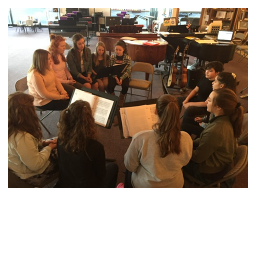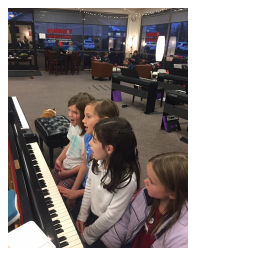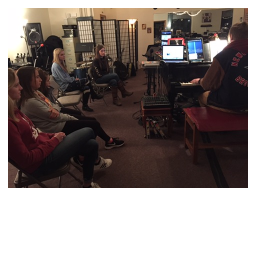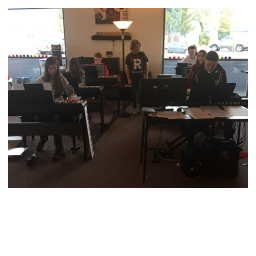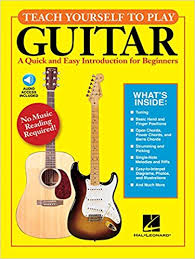Why Group Music Lessons?
Lessons are offered primarily in a group format. Our students experience great success and satisfaction in the group learning environment, and find them successful for several reasons. First, learning music through observation is proven to enhance learning. Students who are able to observe other students learning have an opportunity to process the information, thus finding they learn more easily. Groups also provide positive peer pressure, as a group becomes a comfortable place to be and students like to keep up their part on ensemble pieces. They tend to motivate each other and move much more quickly and consistently than private students.
Another benefit is that students in groups regularly play music in front of others which effectively reduces the fear of playing in public. We provide many opportunities for our students to play with, and for, other musicians for musical development and pleasure. Groups are an expected experience in other life-activities, such as sports (team), as well as school, and dance (class). Studies have found that learning music in isolation is an artificial experience, and often results in a fear of performing in front of others, as well as an inability to collaborate, which is probably the most rewarding musical experience of all! Our groups range in size with plenty of one-on-one time for each student in the class. Typical class sizes are 2-6. Private lesson time slots are reserved for “special circumstances”, must be approved by the instructor, and are scheduled prior to 3pm.
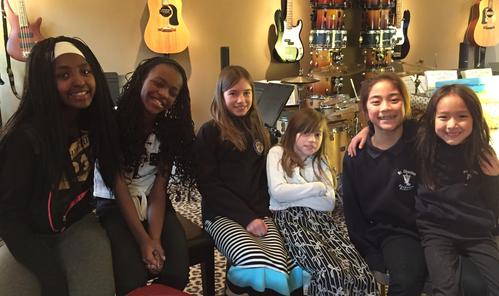
“Sisters” class (circa 2013): L-R: Gardner sisters, Nolting sisters, Loeun sisters

Recital prep
Which method books are used in our studio?
Nothing in life is “one size fits all”. Knowing this, we offer a variety of method books and approaches so that each student may develop a grasp of the wide scope of music proficiency. Our piano, drum, and guitar students all work through “playing-based” curriculum, as well as “reading-based” material, covering a wide variety of genre. Our goal is to train musicians to be well-balanced and have a firm foundation to build upon throughout their lifetime.
Piano:
Reading-based curriculum includes:
Piano Pronto – Jennifer Eklund’s award winning material. Click on the Piano Pronto icon to navigate to their website for more info or to order materials:
Click here and then scrub ahead to the 1:10 mark to begin the overview of Piano Pronto
Piano Adventures by Nancy and Randall Faber –
Alfred Music – Material for voice, piano, drums, and guitar. Click on the Alfred Music icon to navigate to their site:
Voice (overview and curriculum):
Following are some guidelines and suggestions for the training of the voice in a systematic and structured manner. All study material, repertoire choices, and any other decisions regarding course of study are made solely at the discretion of the teacher. Each student will require a course of study, based on basic talent, physical and emotional maturity, musical skills, and interest and commitment.
Special Note: Voice lessons are focused on acquiring vocal technical and artistic skills. Sight reading is a critical musical skill for any singer, and we strongly encourage its pursuit. While sight reading is usually a naturally occurring part of any voice study, aural skills courses are strongly recommended in addition to voice lessons. Basic piano skills are also highly useful to any singer and studies of this instrument should also be considered in conjunction with voice lessons.
The sampling of suggested vocal repertoire included in this curriculum consists primarily of classical repertoire. The voice faculty recognizes that many students may have interests in vocal repertoire outside of the broad classical genre and some appropriate representative music theater pieces are included in the list. However, the faculty would like to emphasize the importance of the development of a basic technique most commonly associated with classical singing as a critical building block for the healthy pursuit of a variety of vocal musical styles.
Voice is also taught in a small group setting as it affords the opportunity to implement the skills of harmonization and choral blend. Studying in a one/one setting deprives the student the regular practice of these necessary skills. It also helps to ease any performance anxiety as our groups provide a safe, supportive environment.
Treble Voice (young singer):
Technique
Develop basic understanding of appropriate posture, breath control and support, and tonal placement. Explore and identify vocal instrument.
Skills
Develop fundamental musical skills, including sight singing. Develop good practice habits, begin language exploration.
Performance opportunities:
Performance possibilities of various kinds (school recitals, studio recitals) may be offered to students who appear ready, are interested, and will benefit from such experience.
Brief Sample of Repertoire:
Classical:
All through the night (Welsh Folk Song)
Long Time Ago (arr. Copland)All through the night (Welsh Folk Song)
If No One Ever Marries Me (Liza Lehmann)
When the Children are Asleep from Carousel (Rogers/Hammerstein)
Musical Theater:
When the Children are Asleep from Carousel (Rogers/Hammerstein)
Castle on a Cloud from Les Miserables (Schonberg)
My New Philosophy from You’re a Good Man Charlie Brown
Born to Entertain from Ruthless
Popular:
Roar by Katie Perry
Lost Boy by Ruth B
Girl in the Mirror by Sophia Grace
Count on Me by Bruno Mars
Teen through adult (ages 15+):
Technique
In addition to Treble voice skills previously learned, work on range development, vowel formation, flexibility, and expressive singing.
Skills
Continue developing language and sight singing skills, work on stage presence, and continue to develop good practice habits. Listen to recordings of respected classical singers and instrumentalists as a study aid to developing musical phrasing.
Develop ability to recognize musical and technical problems. Understand the basic principles of technique. Fine-tune ability to fully integrate technical and emotive elements in a performance. Continue to actively practice sight reading. Fine tune basic comfort in singing in 2 to 3 languages.
Performance opportunities:
Students who appear ready and are interested, are encouraged to take advantage of performance possibilities of various kinds (school recitals, studio recitals, school assemblies and talent shows, local theater productions, church praise teams and choirs). All students will benefit from such experience.
Abbreviated Sample Repertoire:
Classical:
When Love is Kind (Old English)
O Rest in the Lord from Elijah (Mendelssohn)
Were you there? (Spiritual)
Nymphs and Shepherds (Purcell)
Here Amid the Shady Wood (Handel)
Heidenröslein (Schubert)
Die Lotosblume (Schumann)
O cessate di piagarmi (A. Scarlatti)
Nel cor piu non mi sento (Paisiello)
How could I ever know from Secret Garden (Simon/Norman)
He is an Englishman from H.M.S. Pinafore (Gilbert/Sullivan)
When I Have Sung My Songs (Charles)
Beau soir (Debussy)
Vergin tutto amor (Durante)
Se tu m’ami (Pergolesi)
Alma del core (Caldara)
Nina (Pergolesi)
Ombra mai fu from Serse (Handel)
Musical Theater:
If I loved You from Carousel (Rogers/Hammerstein)
Santa Fe from Newsies (Feldman/Menken)
A Change in Me from Beauty and the Beast (Menkin/Rice)
Close Every Door from Joseph and the Technicolored Dreamcoat (Rice/Lloyd Weber)
Beyond My Wildest Dreams from The Little Mermaid
In My Dreams from Anastasia
If I Can’t Love Her from Beauty and the Beast
The Secret of Happiness from Daddy Long Legs
Popular:
Just about anything (with respect to appropriate “family-friendly” lyrics)
Guitar Method:
Mel Bay
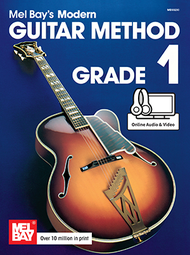
Hal Leonard
Drums/Percussion:
Alfred
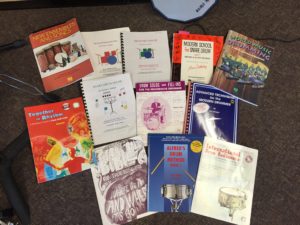
In addition to standard literature, we also use a variety of other pedagogy material including that of Forrest Kinney, Jonny May, Bradley Sowash, Martha Mier, Robert Vandall, Dennis Alexander, Wynn Anne Rossi, and much more.
Playing-based curriculum
(play first, and read later):
For those students who struggle with “traditional” methods, we offer a playing-based method to help you get a ‘leg up’ by playing first, and then reverse engineer what you are already playing, up onto the page. The piano and keyboard program method we use has beginning students — children, teens, adults and seniors playing great-sounding pop, blues, classical, and accompaniment pieces immediately — from their very first lessons! This unique approach produces unprecedented results, and is not only becoming the new standard in entry-level music education, but is redefining music learning. This method employs an entirely new and unique “learn-by-doing” approach that can be easily understood by students of all ages, and focuses on the sheer fun of playing — and producing immediate results. Traditional piano lessons require students to learn how to read music as a means of learning how to play. This “read first, play later” approach is slow and frustrating, and far too many students never acquire the ability to play. Many lose their desire to learn altogether. In reality, expecting students to read music before they have learned to play is like expecting toddlers to read before they have learned to talk! After building a repertoire of 30 to 50 pieces covering a broad range of musical styles, students go on to learn how to read music, their ability to play so well providing a powerful foundation for learning the more formal aspects of music education. Unlike traditional learning, this breakthrough program is tactile, experiential, and multi-sensory, with students being physically, visually, and aurally fully absorbed.
Reading music is temporarily delayed and beginning students have their full attention on the piano and are free to establish a hands-on and personal feeling for the instrument. Students build a playlist of 30-50 songs in their first year that includes pop, blues, classical, jazz, arrangements and accompaniments.
Contact us today to schedule a Free Introductory Session!

